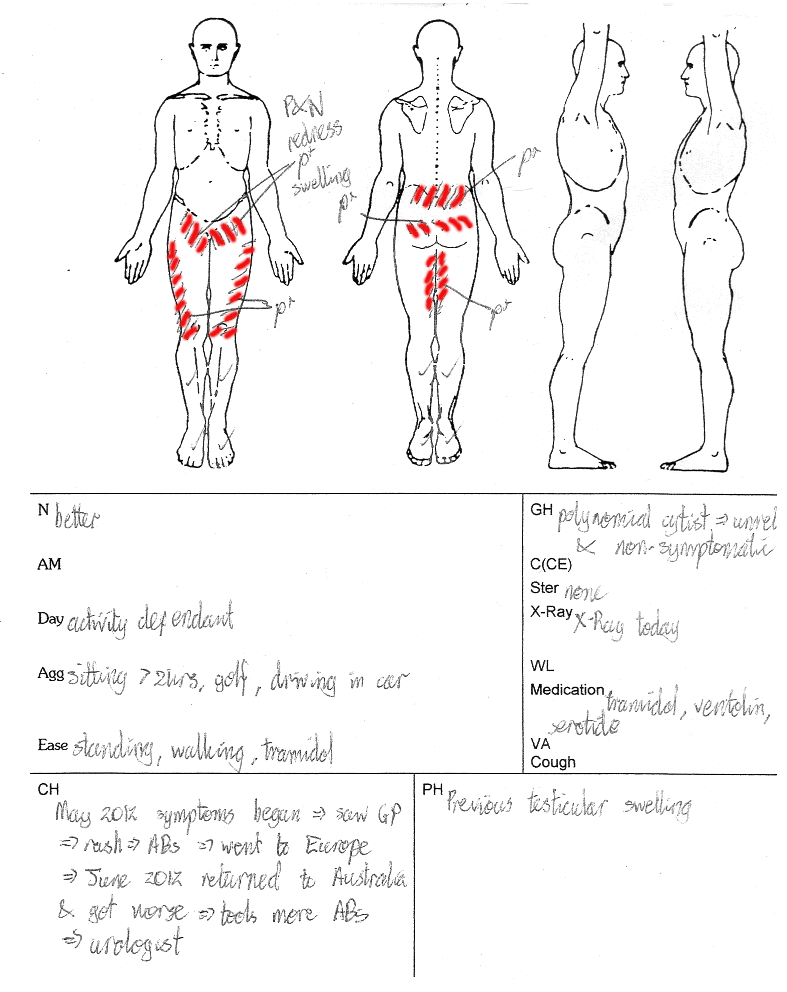Exercises for pudendal neuralgia can help relieve symptoms and improve mobility. These exercises target the pelvic floor muscles to alleviate pain and discomfort caused by pudendal neuralgia.
Pudendal neuralgia is a condition characterized by chronic pain in the pelvic region, often aggravated by sitting, walking, or other activities. If left untreated, it can severely impact a person’s quality of life. However, engaging in specific exercises designed to strengthen and relax the pelvic floor muscles may provide relief and improve symptoms.
It’s important to consult with a qualified healthcare professional before starting any exercise regimen, as they can provide personalized guidance and ensure that the exercises are safe and effective for your individual needs. This article will explore the benefits of exercises for pudendal neuralgia and provide examples of targeted exercises to manage this condition.

Credit: back-in-business-physiotherapy.com
What Is Pudendal Neuralgia?
What is Pudendal Neuralgia?
Pudendal Neuralgia is a type of chronic pain condition that affects the pudendal nerve in the pelvic area.
Definition
Pudendal Neuralgia is a chronic pain condition impacting the pudendal nerve in the pelvic region.
Causes
The causes of Pudendal Neuralgia can include trauma, compression, or inflammation affecting the pudendal nerve.
Symptoms Of Pudendal Neuralgia
When it comes to pudendal neuralgia, recognizing the symptoms is crucial for proper diagnosis and treatment. The condition can cause a variety of distressing symptoms, which can significantly impact an individual’s quality of life. From pain to numbness and burning sensations, these symptoms can be debilitating if left untreated. Understanding the signs of pudendal neuralgia can help individuals seek appropriate medical care and explore exercises and therapies to manage their condition effectively.
Pain
Pain is one of the most common symptoms of pudendal neuralgia. It is often described as a shooting, burning, or stabbing sensation, particularly in the pelvic region, genitals, and rectal area. This intense pain can be triggered by sitting for long periods, sexual activity, or even simple activities like walking, making it challenging for individuals to engage in daily routines.
Numbness
Numbness is another prevalent symptom of pudendal neuralgia. Individuals may experience a loss of sensation, tingling, or a pins-and-needles feeling in the pelvic floor, perineum, or genital area. This numbness can lead to discomfort and difficulty with bowel and bladder function, adding to the distress caused by pudendal neuralgia.
Burning Sensation
A burning sensation is often reported by individuals with pudendal neuralgia. This sensation can be constant or intermittent, and it may exacerbate with prolonged sitting or pressure on the affected area. The burning sensation can disrupt daily activities and impact an individual’s emotional well-being, making it a significant concern for those dealing with pudendal neuralgia.
Diagnosis And Treatment Options
Medical Examinations
Diagnosing pudendal neuralgia typically involves a comprehensive medical history review and physical examination. Your healthcare provider may request imaging tests, such as MRI or CT scans, to rule out other potential causes of your symptoms.
Medications
Medications such as antidepressants and anticonvulsants can help manage the symptoms of pudendal neuralgia. These medications work by altering the way your brain perceives pain signals, subsequently providing relief from discomfort.
Nerve Blocks
Nerve blocks involving the injection of a local anesthetic can provide temporary relief by interrupting the pain signals sent by the pudendal nerve. This procedure is often used as a diagnostic tool to confirm the source of the pain and determine the effectiveness of targeting the nerve.
Physical Therapy
Physical therapy plays a crucial role in the management of pudendal neuralgia. Techniques such as pelvic floor relaxation exercises, biofeedback, and stretches can help alleviate muscle tension and improve overall function in the affected area.
Exercises For Pudendal Neuralgia
Exercises for Pudendal Neuralgia can play a crucial role in managing the symptoms of this condition. Incorporating specific exercises targeting the pelvic area can aid in strengthening and relaxing the affected muscles. Here are some key exercises that can help alleviate symptoms associated with pudendal neuralgia:
Strengthening Exercises
Strengthening exercises focus on improving the stability and support of the pelvic floor muscles, which can help reduce pain and discomfort associated with pudendal neuralgia.
Stretching Exercises
Stretching exercises aim to improve flexibility in the pelvic region, relieving tension and promoting better blood flow to the affected area.
Relaxation Exercises
Relaxation exercises focus on reducing muscle tension and promoting a sense of calmness in the pelvic floor area, which can help alleviate symptoms of pudendal neuralgia.
Pelvic Floor Physical Therapy
Pelvic floor physical therapy can provide relief for individuals suffering from pudendal neuralgia through specific exercises designed to strengthen the pelvic floor muscles and improve nerve function. These targeted exercises can help alleviate pain and discomfort associated with pudendal neuralgia, promoting better overall health and quality of life.
Benefits
Pelvic Floor Physical Therapy is a specialized form of physical therapy that focuses on the muscles and tissues of the pelvic floor. It offers a range of benefits to individuals suffering from pudendal neuralgia, providing relief from the uncomfortable symptoms and improving their overall quality of life.
Engaging in pelvic floor physical therapy can help:
- Reduce pain and discomfort: This therapy aims to relax the tight muscles and tissues in the pelvic floor, which can alleviate the pain and discomfort associated with pudendal neuralgia.
- Improve muscle strength and flexibility: Through targeted exercises and techniques, pelvic floor physical therapy helps strengthen and restore the function of the weakened pelvic floor muscles, improving their flexibility and reducing muscle imbalances.
- Promote better bladder and bowel control: Pudendal neuralgia can impact bladder and bowel function. Pelvic floor physical therapy can help individuals regain control over their bladder and bowel movements, reducing instances of urinary or fecal incontinence.
- Enhance sexual function: Pudendal neuralgia can significantly affect sexual function and intimacy. Pelvic floor physical therapy can address these concerns and improve sexual function and satisfaction by increasing blood flow to the pelvic area, reducing muscle tension, and improving overall pelvic floor health.
Techniques Used
Pelvic floor physical therapy utilizes various techniques to target and treat the specific issues related to pudendal neuralgia. Some common techniques include:
- Manual therapy: This technique involves the skilled hands-on manipulation of the pelvic muscles and tissues to release tension, improve mobility, and reduce pain.
- Therapeutic exercises: Specific exercises are prescribed to improve the strength, coordination, and flexibility of the pelvic floor muscles. These exercises may include kegel exercises, biofeedback training, and stretching routines.
- Electrical stimulation: This technique involves the use of low-level electrical currents to stimulate the pelvic floor muscles, improving their function and reducing pain.
- Behavioral modifications: Pelvic floor physical therapy may also involve educating patients about healthy lifestyle habits and making changes such as diet modifications, proper bowel and bladder habits, and posture corrections.
Frequency And Duration
The frequency and duration of pelvic floor physical therapy sessions depend on the severity of the condition and the individual’s specific needs. Typically, sessions are held once or twice a week, and each session lasts approximately 45 minutes to an hour. The total duration of therapy can vary from a few weeks to several months, depending on the progress made and the individual’s response to the treatment.

Credit: www.facebook.com
Yoga For Pudendal Neuralgia
If you are seeking natural ways to alleviate the pain and discomfort associated with pudendal neuralgia, yoga can be an effective and gentle approach. Yoga offers a combination of stretching, strengthening, and relaxation exercises that can help reduce inflammation, release tension, and improve overall pelvic floor health. However, it’s important to practice yoga mindfully, as certain poses may aggravate symptoms while others can provide relief.
Yoga Poses To Avoid
While yoga can be beneficial for pudendal neuralgia, there are certain poses that could potentially exacerbate symptoms. It’s crucial to avoid any poses that put pressure or strain on the pelvic area, as this can further irritate the pudendal nerve. Here are a few yoga poses to steer clear of:
- Malasana (Garland pose): This deep squatting pose can place excessive pressure on the pelvic floor muscles and aggravate nerve compression.
- Baddha Konasana (Butterfly pose): While this pose is generally beneficial for the hips and groin, it can be challenging for individuals with pudendal neuralgia due to the stretching and compression involved.
- Utkatasana (Chair pose): This pose, often referred to as the “chair pose,” can put strain on the pelvic floor. It’s best to avoid it to prevent further discomfort.
Yoga Poses For Pain Relief
On the other hand, there are several yoga poses that can help alleviate pain and discomfort caused by pudendal neuralgia. These poses focus on gentle stretching, relaxation, and improving blood flow to the pelvic region. Incorporate the following poses into your yoga practice:
- Child’s pose (Balasana): This restorative pose gently stretches the lower back and hips, promoting relaxation and releasing tension in the pelvic area.
- Supine Bound Angle pose (Supta Baddha Konasana): Lie on your back with the soles of your feet together and knees bent, allowing gravity to open up the hips and relieve tension in the pelvic floor.
- Supported Bridge pose (Setu Bandhasana): Using props such as a bolster or blocks, elevate your hips to create a gentle stretch along the lower back and pelvis. This pose can help improve circulation and alleviate pain.
Breathing Exercises
In addition to yoga poses, incorporating specific breathing exercises into your routine can further support the management of pudendal neuralgia. Deep belly breathing, also known as diaphragmatic breathing, can help reduce stress, relax pelvic floor muscles, and enhance overall pelvic circulation. To practice deep belly breathing:
- Sit or lie down in a comfortable position.
- Place one hand on your abdomen, just below your navel, and the other hand on your chest.
- Inhale deeply through your nose, allowing your belly to rise as you fill your lungs with air.
- Exhale slowly through your mouth, focusing on gently contracting your abdominal muscles and feeling your belly sink back down.
- Continue this deep belly breathing for several minutes, allowing yourself to fully relax and let go of any tension.
Adding yoga poses and breathing exercises to your routine can help manage and alleviate symptoms of pudendal neuralgia. Consistency and mindfulness are key in finding relief and promoting healing within the pelvic area. As always, it’s important to consult with a healthcare professional or a certified yoga instructor before starting any new exercise regimen, especially if you have a pre-existing condition.
Alternative Therapies
When seeking relief from pudendal neuralgia, alternative therapies can provide a holistic approach to manage symptoms. Here are some alternative therapies that have shown promise in alleviating pudendal neuralgia:
Acupuncture
Acupuncture involves the insertion of thin needles into specific points on the body to help alleviate pain and improve nerve function.
Massage Therapy
Massage therapy can help reduce muscle tension and improve blood flow to the affected area, potentially relieving symptoms of pudendal neuralgia.
Biofeedback
Biofeedback is a technique that helps individuals gain control over involuntary bodily functions, such as muscle tension, through real-time monitoring and feedback.

Credit: m.youtube.com
Lifestyle Changes To Manage Pudendal Neuralgia
Pudendal neuralgia can be managed through various lifestyle changes, focusing on dietary adjustments, stress management, and ergonomic modifications. These measures can help alleviate symptoms and improve the overall quality of life for individuals dealing with pudendal neuralgia.
Dietary Changes
Eating a balanced and nutritious diet is essential for managing pudendal neuralgia. Certain foods, such as processed foods, caffeine, and spicy dishes, may exacerbate symptoms. Therefore, it’s crucial to maintain a diet rich in fiber, fruits, vegetables, and lean proteins.
Stress Management
Stress can intensify pudendal neuralgia symptoms, so it is important to prioritize stress management techniques. Practices such as mindfulness meditation, deep breathing exercises, and gentle yoga can help reduce stress and alleviate discomfort.
Ergonomic Adjustments
Simple changes in posture and ergonomics can make a significant difference for individuals with pudendal neuralgia. This includes using proper cushions and seating options to relieve pressure on the pelvis, as well as adopting ergonomic workstations to reduce strain on the lower back and pelvic region.
Frequently Asked Questions For Exercises For Pudendal Neuralgia
How Do You Treat Pudendal Neuralgia?
Treatment options for pudendal neuralgia include physical therapy, medications, nerve blocks, and surgery. Physical therapy can help alleviate symptoms through exercises that strengthen pelvic muscles. Medications such as pain relievers and nerve pain medications may also be prescribed. Nerve blocks, where medication is injected into the affected area, can provide temporary relief.
In severe cases, surgery may be considered to decompress the pudendal nerve.
What Exercises Can Help Relieve Pudendal Neuralgia?
Exercises that can help relieve pudendal neuralgia include kegel exercises, yoga poses like child’s pose and pigeon pose, and stretches for the hips and lower back. Kegel exercises help strengthen the pelvic floor muscles, while yoga poses and stretches can help alleviate tension in the pelvic area.
It’s important to consult with a healthcare professional or physical therapist to determine the best exercises for your specific condition.
Can Cycling Worsen Pudendal Neuralgia?
Cycling can potentially worsen pudendal neuralgia due to the pressure and friction placed on the pudendal nerve during prolonged periods of sitting on a bicycle seat. The constant compression can irritate the nerve and contribute to symptoms. If you have pudendal neuralgia, it’s advisable to modify your cycling routine, such as using a more comfortable seat or taking breaks to relieve pressure on the pelvic area.
Is Pudendal Neuralgia Curable?
While there is no definitive cure for pudendal neuralgia, it can be managed effectively with the right treatment approach. Physical therapy, medications, and other interventions can help alleviate symptoms and improve quality of life. It’s important to work with healthcare professionals who specialize in pudendal neuralgia to create a personalized treatment plan that addresses your specific needs and goals.
Conclusion
Incorporate these exercises in your routine to find relief and improve your quality of life. Consistency is key when managing pudendal neuralgia symptoms, so make sure to listen to your body and seek professional guidance if needed. With dedication and patience, you can take positive steps towards alleviating discomfort and enhancing your well-being.








